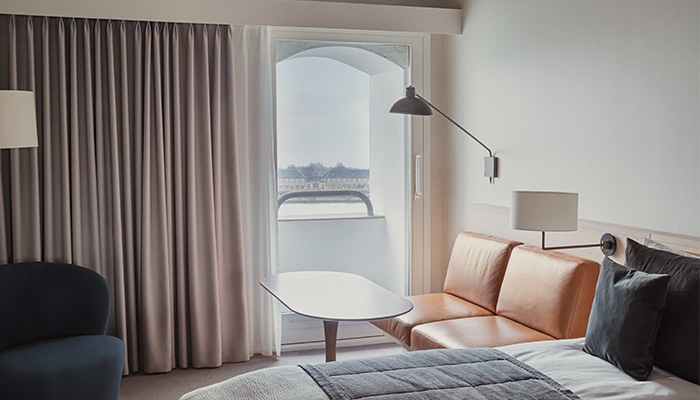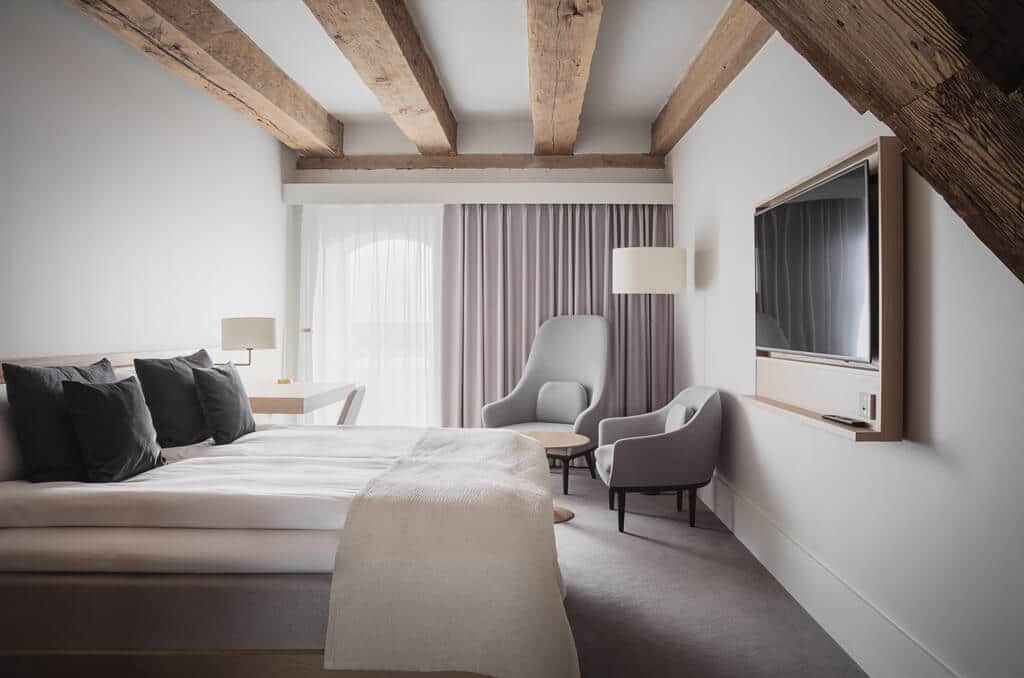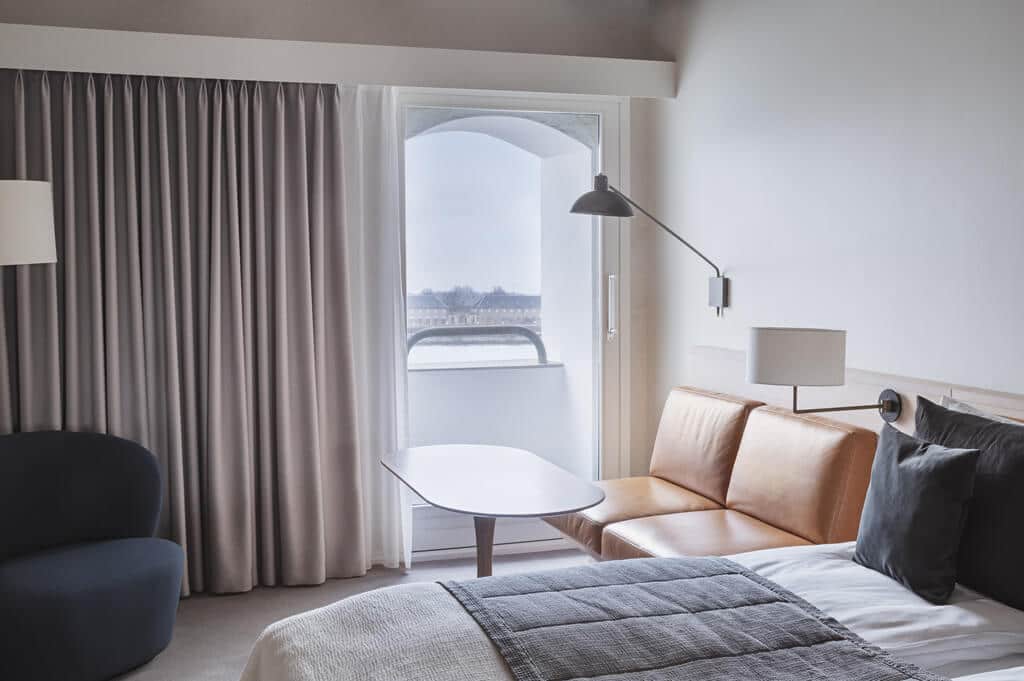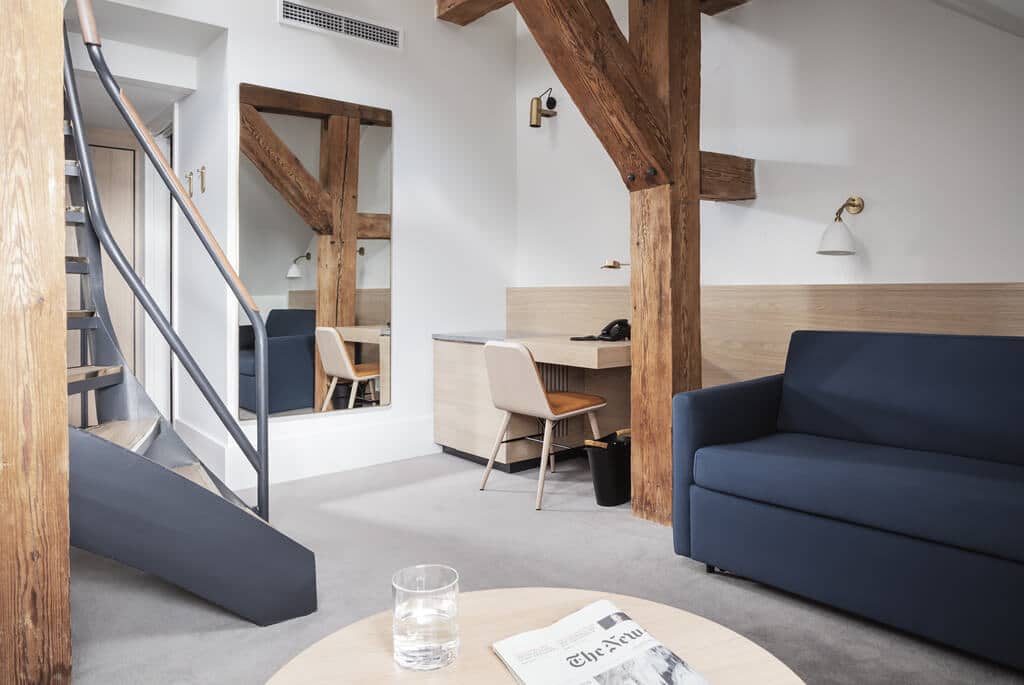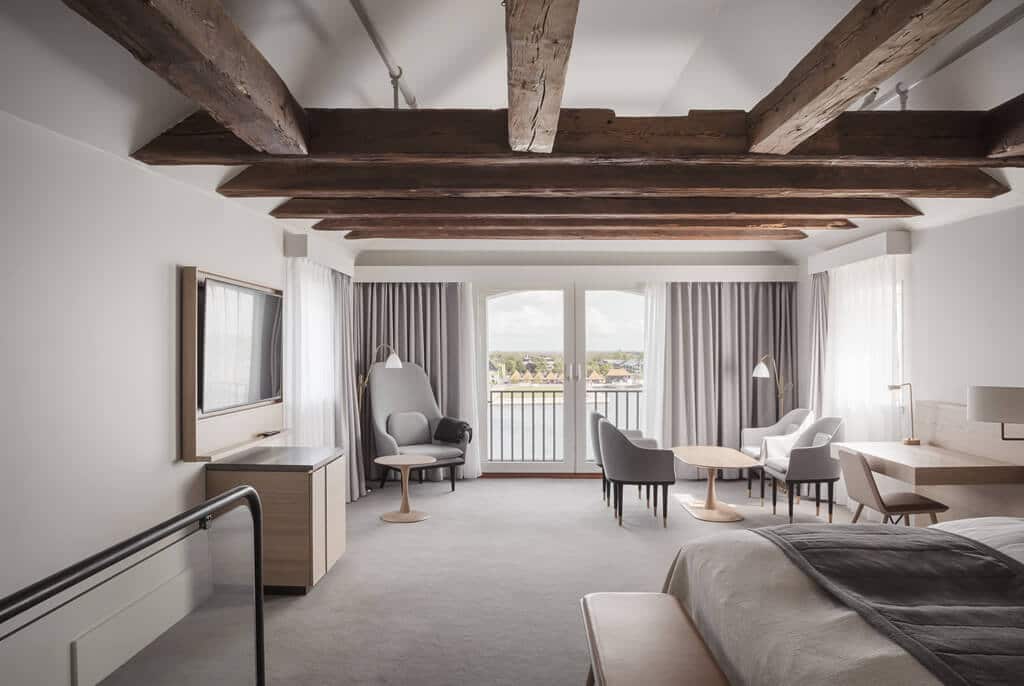The impressive history of the building
Standing proudly along the waterfront, the Admiral Hotel carries within it a remarkable history that stretches back to the year 1787. Over the decades, the hotel has witnessed a series of events that have shaped both the city and the country’s destiny. It was here at the hotel’s quay that the maritime trade from large sailing ships flourished, and where the harbor became the focal point for a multitude of enterprising activity.
Before the Admiral Hotel took shape, the building was originally divided into two. These buildings were used as grain drying warehouses, erected for the trading firm named Pingel, Meyer, Prætorius and Co., and today the two buildings are a real treasure of history and architectural splendor. The imposing, raw beams that make up the skeleton of the building come from pine trees in Pomerania, also known as Germany and Poland from today, and are incorporated in all the rooms at the hotel.
The two warehouses were in their time a center for grain drying and storage of goods from the East. The magazines could hold around 30,000 barrels of grain, as well as a grain drying oven, which can be seen today in the current Lounge of the hotel. The middle section itself, which connects the two warehouses and which today contains elevators etc., was only built 100 years after the warehouses.
Over the centuries, the area at Toldbodgade has been characterized by events such as fires and historic naval battles. After the devastating fire in 1794 that destroyed Christiansborg Castle, the grain drying warehouses became neighbors of the then King Christian VII, who had to move into Amalienborg. Since then, Admiral Hotel has had the unique honor of sharing a neighborhood with the Danish royal family. The hotel’s historic location has also made the magazines a witness to events such as the “Slaget på Reden” and the English siege in 1807, where the wounded were housed in the old grain drying oven.


